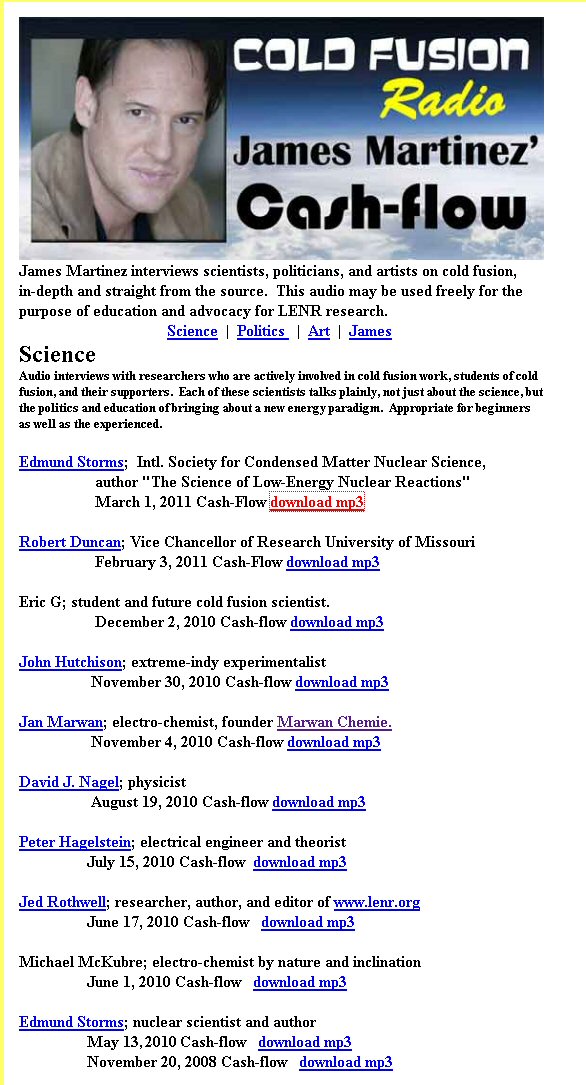Are you missing “cold fusion” from New Energy Times?
In the last few years, we have figured out that there really is no evidence for cold fusion and that the best so-called evidence for it was fabricated. In the course of our investigations, however, the evidence for low-energy nuclear reactions, perhaps understood, perhaps not, has been clear and consistent. If it’s science you want, you’ll find it here. But “cold fusion”? You’ll only find that in our history section.
Cold fusion believers have found a new home on the Web at the “Cold Fusion Now” Web site. They recently interviewed Robert Duncan of the University of Missouri.
The Cold Fusion Now Team:
Ruby Carat: Musician, artist and math teacher.
Elienation: Writer, artist and filmmaker.
James Martinez: Media director and talk show host.
Alien Scientist: Filmmaker and director Cold Fusion Now You-tube channel.
Edmund Storms: Author and scientist.
James Martinez hosts cold fusion believers on his Ca$h Flow radio show.




